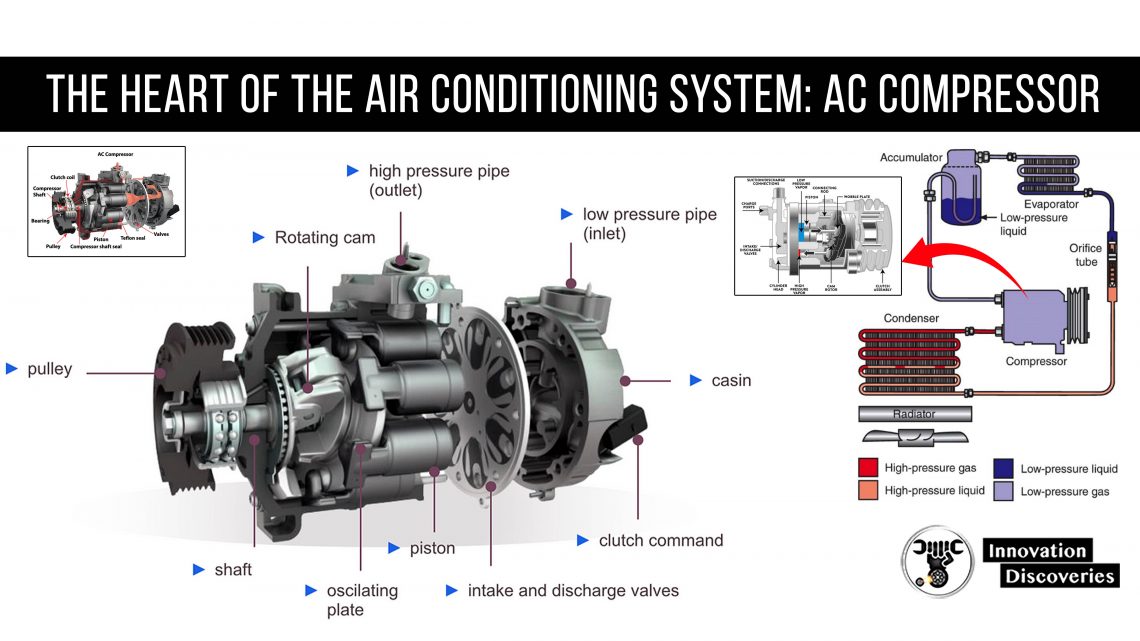
Have you ever wondered what makes your air conditioner work its magic? It's not just a box that blows cold air; it's a carefully engineered system with several crucial parts. Let’s break down the key air conditioning components that work together to keep your home comfortable.
The Essential Components
1. The Compressor: The Powerhouse
The compressor is like the heart of your AC system. It's responsible for circulating the refrigerant, a special substance that absorbs and releases heat. Think of it as a pump that increases the pressure and temperature of the refrigerant gas. This pressurized hot gas is then sent to the condenser.
2. The Condenser: Releasing the Heat

Located outside your home, the condenser is where the hot, pressurized refrigerant releases its heat. It's made up of coils and fins that help dissipate the heat into the surrounding air. A fan helps to blow air across the condenser coils, speeding up the cooling process. As the refrigerant cools, it condenses into a liquid.
3. The Evaporator: Absorbing the Heat
Inside your home, the evaporator is where the magic happens. Here, the liquid refrigerant absorbs heat from the indoor air. A fan blows air across the evaporator coils, and as the warm air passes over the cold coils, it cools down. The refrigerant, now heated, turns back into a gas and travels back to the compressor to start the cycle again. This is how the system effectively removes heat from your indoor environment.
4. The Expansion Valve (or Thermostatic Expansion Valve - TXV): Controlling the Flow
The expansion valve (or TXV) is a crucial part that regulates the flow of refrigerant into the evaporator. It controls the amount of refrigerant entering the evaporator, ensuring that the right amount is used for optimal cooling. This valve helps maintain the efficiency of the entire system by ensuring that the refrigerant evaporates at the correct rate.
5. Refrigerant: The Cooling Agent

Refrigerant is the substance that moves through the system, absorbing and releasing heat. It's the lifeblood of your AC. Older systems used refrigerants that were harmful to the ozone layer, but modern systems use more environmentally friendly alternatives. It is very important to have the correct amount of refrigerant. Too much, or too little, will cause your system to operate inefficiently.
6. The Blower Motor: Circulating the Air
The blower motor is responsible for circulating the air through your home's ductwork. It pushes the cooled air from the evaporator into your rooms and pulls warm air back to be cooled. Without the blower motor, the system wouldn't be able to distribute the cool air effectively.
7. Thermostat: Setting the Temperature
The thermostat is your control center. It allows you to set the desired temperature and tells the AC system when to turn on or off. Modern thermostats can be programmable, allowing you to set schedules and save energy. They can also be smart thermostats that learn your habits.
8. Ducts: Delivering the Cool

Ducts are the network of channels that carry the cooled air throughout your home. Well-maintained ducts are essential for efficient cooling. Leaky or poorly insulated ducts can waste energy and reduce the system's effectiveness. Air leaks can also cause hot and cold pockets in the home.
Understanding the Cycle
These air conditioning components work together in a continuous cycle. The refrigerant absorbs heat in the evaporator, is compressed and heated in the compressor, releases heat in the condenser, and then returns to the evaporator to start the cycle again. This process keeps repeating, maintaining a comfortable temperature in your home.
Maintenance Matters
Just like any machine, your AC system needs regular maintenance to keep it running smoothly. Cleaning or replacing the air filter, checking refrigerant levels, and inspecting the coils are just a few of the tasks that can help prolong the life of your system and ensure optimal performance. Regular maintenance also helps save money on energy bills, and prevents costly repairs down the road. If you have any concerns, always contact a qualified HVAC technician.
No comments:
Post a Comment
Note: Only a member of this blog may post a comment.